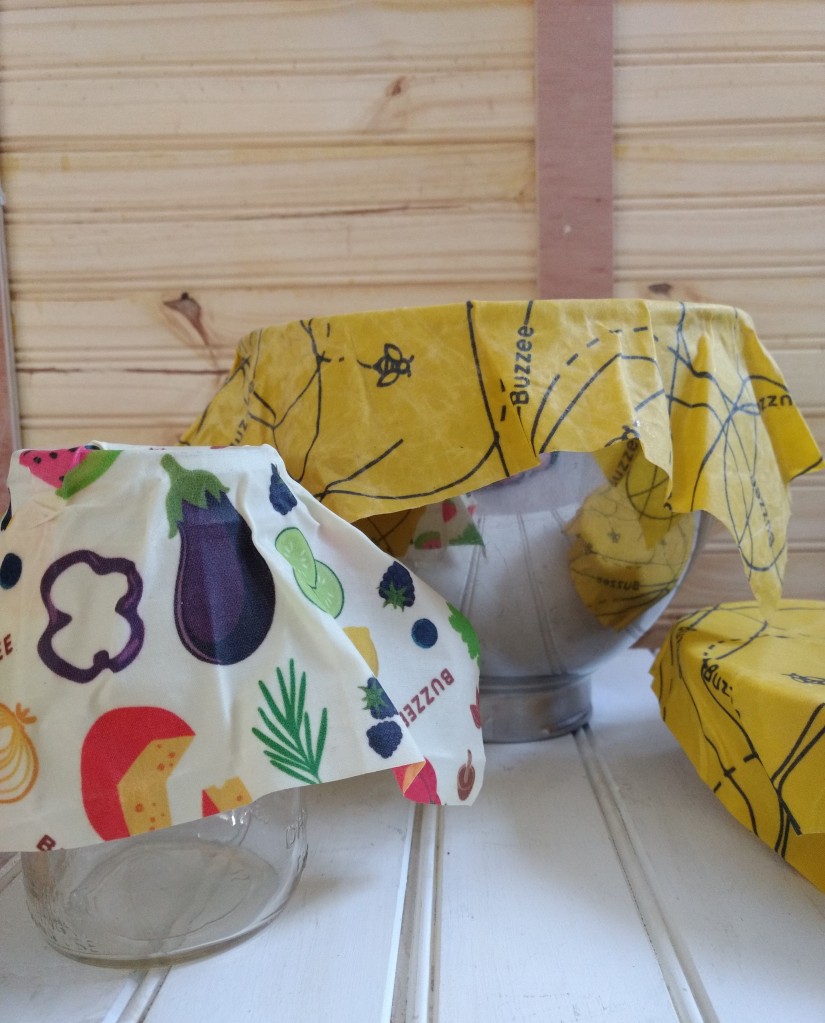
One of the horrible habits I picked up when I moved out on my own was storing food in the fridge without any covering. Stretch-tight/clingwrap was just an extra expense that I never deemed necessary when I was living on my own in Boston. I also never had a ton of room in my apartments for a lot of storage containers and most of what I had was used for meal prepping. And since I meal prepped, I knew that avocado in the fridge would be eaten for breakfast for the next 4 days so is it really necessary to wrap it up? Or, if I couldn’t find a lid for a storage container, eh. It’ll be eaten in a day or so anyways. No big deal.
My mom, who I have been sharing a fridge with since around the beginning of COVID, would disagree!
I don’t think it’s a coincidence that a few months into sharing a fridge, my mom decided to gift me some of these Buzzee Wraps. She saw them on Deals and Steals on GMA and I think there was at least 1 avocado half in the fridge that she knew would be a perfect for these sustainable wraps.
And you know what, she wasn’t wrong. They do work great for wrapping up stray produce, especially avocados!

So, what’s a beeswax wrap? Beeswax wraps are typically a piece of cloth, in this case, organic cotton, covered in a thin layer of bees wax and used in place of plastic wrap or plastic baggies in some instances. Items like Stretch-tite typically are not recyclable in curbside programs and can actually wreak havoc on recycling machinery. Which means, like all other plastic we use, it’s never going away! Buzzee beeswax wraps are home compostable but can get upwards of 200 uses before it needs to be disposed. There are even tips on line to help you extend your beeswax wrappers longer than 200 uses, including recovering the cotton in fresh beeswax.
We purchased the 4 pack in Busy Bees, the 3 pack in Assorted and the sandwich wrap. As someone who just doesn’t use plastic wrap and honestly, hasn’t for years, the hardest part about these is remembering I have them. I use them mostly to wrap up loose produce that I already cut into- avocado halves, tomatoes I’m using for a sandwich, a piece of fruit- as well as bowls I’m leaving out for rising bread or soaking beans. These came after the pandemic hit so I haven’t had a chance to use the sandwich wrap much, though it’s insanely cute and would be awesome for lunches and snacks once I’m regularly leaving the house again.

I have found that they are incredibly easy to clean. I use cold water with a sudsy rag, rinse, and let dry in the sink, usually draped over something else drying in the sink. To get them to stay around an object, like the lid of a bowl, you warm the wrapper with your hands. The wrapper will sort of soften and then mold around the food/bowl/container. I think some people may struggle with this a bit but I found it got easier with practice.

The downside of using beeswax wrappers is you can’t heat them up. Because they are made out of beeswax, they melt once heated. This means that if you are someone that uses plastic wrap in the microwave to cover your food and keep it from splattering, this isn’t a good swap for you. You also can’t cover warm food or a hot dish for the same reason.
I can’t say I’ve come across too many instances where I can’t use them, though. The two instances above haven’t really bothered me. I leave out food to cool before storing them or use a lidded container and, honestly, I don’t like heating my food with plastic of any kind so those examples have been easy to navigate for me. Again, the hardest thing has just been remembering to use them!

I will say, my avocados seem less brown when I wrap them up in a Buzzee wrapper than if I just pop it into the fridge naked. Plus, since they are wrapped in a cute wrapper, I’m also less likely to lose it amongst the chaos of a shared fridge. In otherwords, less food waste!
Buzzee’s instagram has others ideas on how you can use their products so I would certainly suggest checking them out. I really enjoy this product and found it overall, a good plastic-free swap for me!
